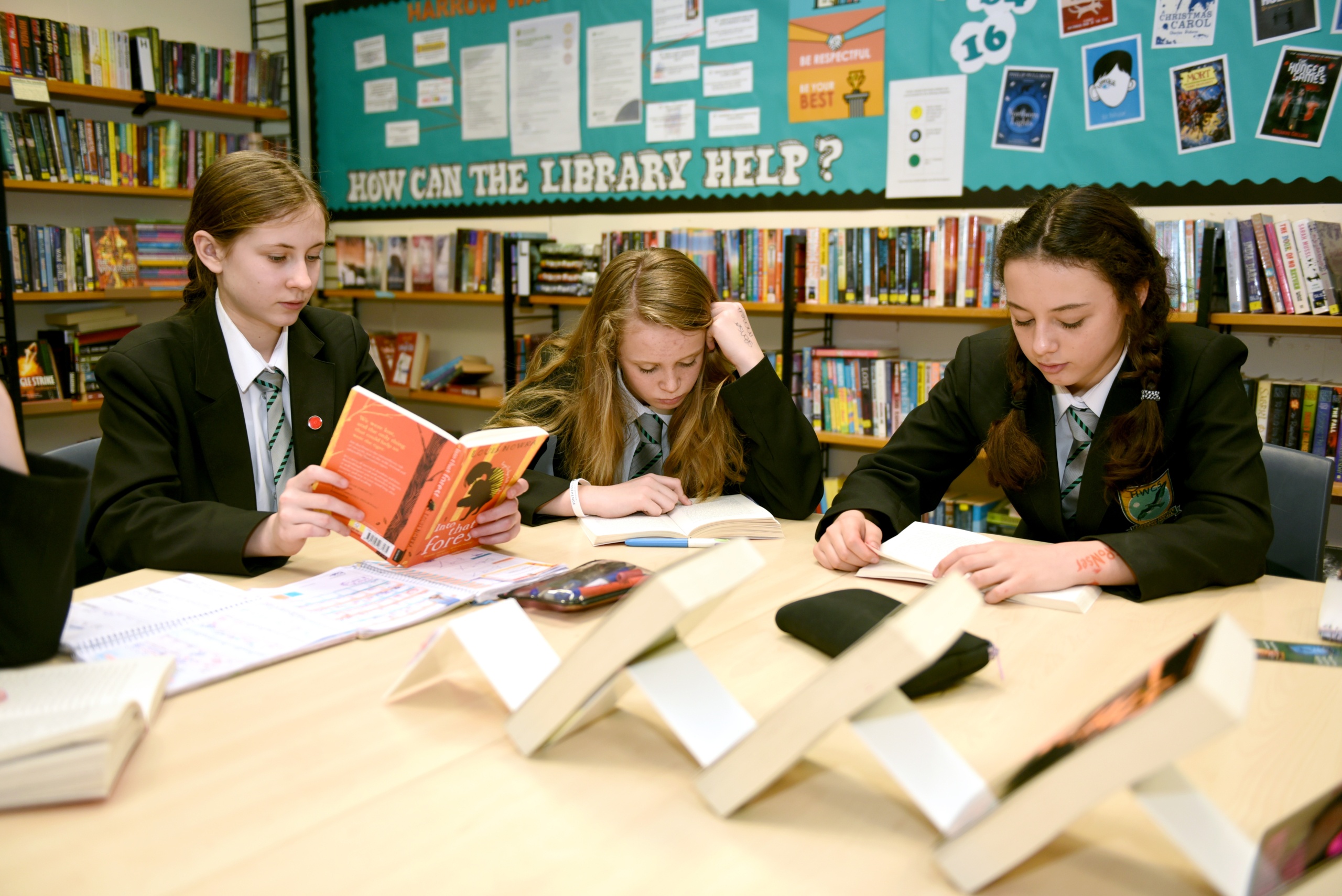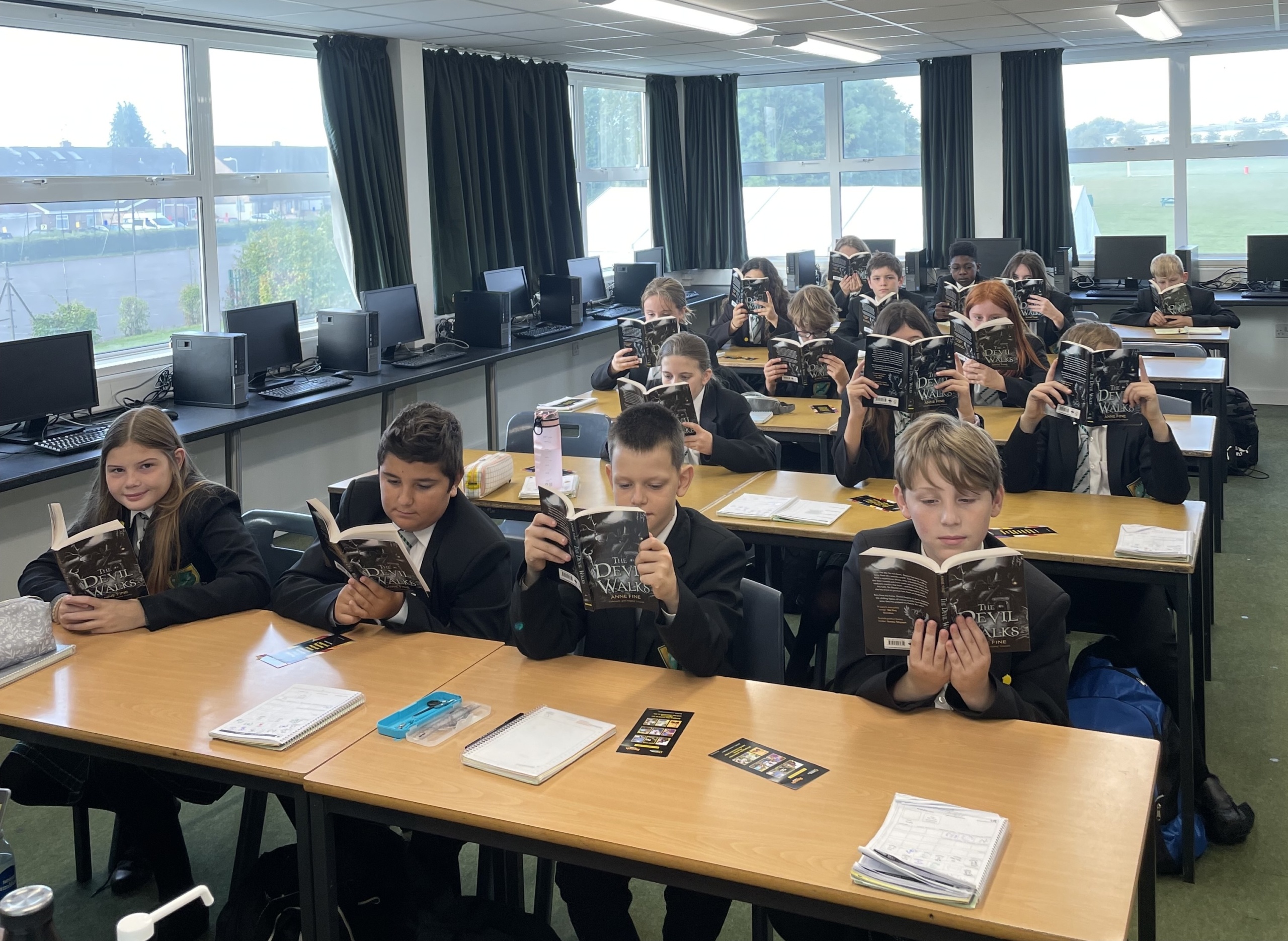Year 7 Literacy and Numeracy Catch-up Premium
The Year 7 Literacy and Numeracy Catch-up Premium was allocated to schools to support all Year 7 pupils who did not achieve a Level 4 in either English (reading) and/or maths SATs at the end of Year 6. In 2019-20 the indicative grant for Harrow Way School is estimated to be £12,202.00. From 2016-17 onwards, the literacy and numeracy catch-up premium gives schools additional funding to support year 7 pupils who did not achieve the expected standard in reading and/or maths at the end of key stage 2. The expected standard is now defined as a scaled score of 100 or above in these tests (prior to this it was Level 4 or above).
| Year | Amount |
|---|---|
| 2016-17 | £12,201 |
| 2017-18 | £14,011 |
| 2018-19 | £12,402 |


This grant has existed for six years and Harrow Way School has used this grant in a number of ways including:
- Employment of TAs to supervise paired reading project led by Year 10/11 students who support Y7 low readers.
- Use of the QLA in ASP (Analyse School Performance) to view key stage 2 performance by subject strand, by question and by individual pupils. This supports are targeted intervention even further.
- Part funding of a teacher’s salary to teach 7×4, a transition group of vulnerable students who are also below average on entry. They are taught in the same group for half the week – literacy/numeracy/humanities.
- Transition Reading project: Treasure Island.
- Whole school inset on areas such as questioning, metacognition and preparing for longer written responses in exams.
- Year 7 Parent event for catch up students to look at how they can support at home with English and Maths.
- Literacy mats and dictionaries for all classrooms. Numeracy and Literacy activities in Tutor time.
- Through PiXL membership we will use the PIXL Microwave to diagnose weakness, plan the curriculum and close gaps in learning, as well as using PiXL tools to delivery therapy sessions and retest for impact for those students who are unable to score 100/150 in the initial assessment.
- Through PiXL membership, purchasing the Vocabulary App: PiXL Unlock to target and boost vocabulary skills.
- Using GL Assessments, all students were assessed for reading and spelling ages to enable staff to target better support for them in lessons other than English and Maths, as well as establishing a baseline to assess impact.
- Using a new GL Assessment Tool (PASS) to determine attitudes and pre-disposition to learning to determine requirements for SEAL/ELSA intervention.
- Use of Tutor Time (3x per week) for intervention including key numeracy and literacy tasks.
- Curriculum spending to improve reading and numeracy (resources/training).
The impact of this intervention has been closely monitored throughout the year:
- Students in this target group are reviewed regularly by the class teacher (7X3/7×4 and the Year 7 Catch-up Premium intervention group.
- This information is collated in Termly Progress reviews updated and sent home termly.
As a result of these interventions and continued excellent teaching and learning, the progress of these students has improved considerably over the course of Years 7 and 8.
Key research findings into literacy interventions include the following:
- Having ‘no intervention’ does not enable pupils with literacy difficulties to catch up (Brooks, 2002, 2007)
- Many effective literacy intervention programmes have co-operative learning at their core (Slavin and Lake, 2008)
- The key elements of effective teaching approaches for low attainers in literacy include: early intervention, one to one and/or small group support and personalisation (Brooks, 2002)
- There are fewer interventions to help pupils struggling with reading in secondary education in comparison to a wide range of interventions designed to help primary pupils (Brooks 2002, 2007). However, some interventions that are primarily intended for use in primary schools could be used at any time between the ages of 6 and 14
The following table shows the number of students who were below the expected standard which is now defined as a scaled score of 100 or above in these tests (prior to this it was Level 4 or above).
| Year 7 in 2017-2018 | No of students not at standard at KS2 | No of students not achieving HW End of Year Expectations at End of Year 7 |
|---|---|---|
| Reading | 48 | 12 |
| Maths | 45 | 14 |
| Year 7 in 2018-2019 | No of students not at standard at KS2 | No of students not achieving HW End of Year Expectations at End of Year 7 |
|---|---|---|
| Reading | 42 | 33 |
| Maths | 34 | 25 |
| Year 7 in 2019-2020 | No of students not at standard at KS2 | No of students not achieving HW End of Year Expectations at End of Year 7 |
|---|---|---|
| Reading | 60 | |
| Maths | 47 |
Reporting
- It is the Headteacher’s responsibility to produce termly reports to Governors (S&C), highlighting progress and impact
- The success of this intervention is reported termly to the parents of the students receiving support in terms of a termly report and to all parents through this annual report.
Parental Contact
Any parental queries regarding the Year 7 Catch-up Premium should be directed to Mrs German, Assistant Headteacher.
Expected standard in reading and/or maths by the end of Year 6
From September 2016, the Literacy and Numeracy Catch-up Premium is to support all Year 7 pupils who did not achieve the the expected standard is defined as a scaled score below 100 in these assessments.
At the end of Key Stage 2 in 2019, 60 out of the cohort of 180 did not reach standard in Reading and 47 out of 180 did not in reach standard in Mathematics. Figures for 2018 were 42 out of the cohort of 195 for Reading and 34 out of 195 for Maths did not reach standard. Funding will be at the same level as in 2018-19 (approximately £12,000) therefore we plan to maintain and further refine our targeted intervention, as follows:
Targeted one-to-one and small group withdrawal tuition and support in English, Literacy and Maths.
Use of Key Stage 2 Question Level Analysis, the PiXL Microwave and GL Assessments to target key
strands where students have under-achieved.
Use of the PASS Intervention software (GL Assessments) to determine student attitudes to learning
and offer support where appropriate.
English – Arrow (literacy intervention), Lexia (developing skills that support literacy), Nessy (spelling and reading), Speed Up (Handwriting), Wordshark
Maths – Numbershark, Numeracy Ninjas, Timetables
General – SEAL (Emotional literacy), ELSA (social skills)
